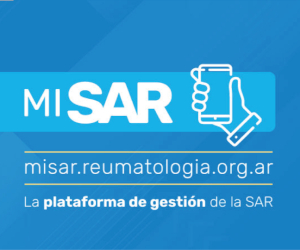REFERENCE VALUES FOR THE ONE-MINUTE SIT-TO-STAND TEST IN PEDIATRIC PATIENTS WITH JUVENILE IDIOPATHIC ARTHRITIS
Keywords:
Juvenile Idiopathic Arthritis, Muscle strength, Physical Therapy, Muscle Weakness
Abstract
Background: Children with Juvenile Idiopathic Arthritis (JIA) experience periods of pain and immobility that impact their physical capacities. This study aimed to describe reference values for the One Minute Sit to Stand Test (1-STS) in children with JIA as an assessment of lower limb muscle strength. Methods: An observational study included 15 children with JIA aged 5 to 16 years. Their performance in the 1-STS was evaluated. Results: Children with JIA (n=15) achieved 40.73±10 repetitions in the 1-STS. A significant positive correlation was found between the 1-STS and the 6-Minute Walk Test (r=0,58; p=0,02), as well as with the Functional Capacity Index (CAPFUN) (r=0.54; p=0,04). No significant correlations were observed between the Childhood Health Assessment Questionnaire (CHAQ) and the 1-STS (r=-0,20; p=0,49), nor with the Juvenile Arthritis Disease Activity Score (JADAS) (p=0,82). Conclusion: Children with JIA demonstrated reduced lower limb muscle strength values compared to healthy children of the same age. The 1-STS can be considered to evaluate the muscle weakness in this population.References
Lozano M. Manual SER de diagnóstico y tratamiento de las enfermedades reumáticas autoinmunes sistémicas. Sociedad Española de Reumatología. Alén JC, editor. 2014.
De Inocencio Arocena J, Gascón CU. Artritis idiopática juvenil. Criterios de clasificación. Índices de actividad. Protoc diagn ter pediatr. 2020;2:27–36. [Acceso en línea]
Rochette E, Duché P, Merlin E. Juvenile idiopathic arthritis and physical activity: possible inflammatory and immune modulation and tracks for interventions in young populations. Autoimmun Rev. 2015;14(8):726–34. doi: 10.1016/j.autrev.2015.04.007. Disponible en: http://dx.doi.org/10.1016/j.autrev.2015.04.007
Nigrovic PA, Colbert RA, Holers VM, Ozen S, Ruperto N, Thompson SD, et al. Biological classification of childhood arthritis: roadmap to a molecular nomenclature. Nat Rev Rheumatol. [Internet]. 2021 May;17(5):257-269. Disponible en: http://dx.doi.org/10.1038/s41584-021-00610-5
Mannion ML, Cron RQ. Therapeutic strategies for treating juvenile idiopathic arthritis. Curr Opin Pharmacol. 2022 Dec;64:102226. Disponible en: http://dx.doi.org/10.1016/j.coph.2022.102226
Stevanovic D, Susic G. Health-related quality of life and emotional problems in juvenile idiopathic arthritis. Qual Life Res [Internet]. 2013 Mar;22(3):607-12. Disponible en: http://dx.doi.org/10.1007/s11136-012-0172-0.
García-Galicia A, Hernández-Sánchez V, Santaella-Avalos A, Martínez-Hernández AJ, Montiel-Jarquín ÁJ, Barranco-Cuevas IA, et al. Evaluación de la calidad de vida y la actividad de la enfermedad en artritis idiopática juvenil. Rev Med Inst Mex Seguro Soc. 2021;59(2):133-40.
Rebane K, Ristolainen L, Relas H, Orenius T, Kautiainen H, Luosujärvi R, et al. Disability and health-related quality of life are associated with restricted social participation in young adults with juvenile idiopathic arthritis. Scand J Rheumatol. 2019;48(2):105–13. doi: 10.1080/03009742.2018.1493140. Disponible en: http://dx.doi.org/10.1080/03009742.2018.1493140
Hyrich KL, Lal SD, Foster HE, Thornton J, Adib N, Baildam E, et al. Disease activity and disability in children with juvenile idiopathic arthritis one year following presentation to pediatric rheumatology. Results from the Childhood Arthritis Prospective Study. Rheumatology (Oxford). 2010;49(1):116–22. doi: 10.1093/rheumatology/kep352. Disponible en: http://dx.doi.org/10.1093/rheumatology/kep352
Klepper SE. Measures of pediatric function: The child health assessment questionnaire (CHAQ), juvenile arthritis functional assessment report (JAFAR), juvenile arthritis functional assessment scale (JAFAS), juvenile arthritis functional status index (JASI), and pediatric orthopedic surgeons of north America (POSNA) pediatric musculoskeletal functional health questionnaire. Arthritis Rheum. 2003;49(S5):S5–14. doi: 10.1002/art.11398. Disponible en: http://dx.doi.org/10.1002/art.11398
Iglesias MJ, Cuttica RJ, Herrera Calvo M, Micelotta M, Pringe A, Brusco MI. Design and validation of a new scale to assess the functional ability in children with juvenile idiopathic arthritis (JIA). Clin Exp Rheumatol. 2006;24(6):713–8. [Acceso en línea]
Mian Q, Rumsey DG, Verschuren O, Moez EK, Roy M, Kaup C, et al. Reference values for the six-minute walk test in children with Juvenile Idiopathic Arthritis. Phys Occup Ther Pediatr. 2022;42(2):187–97. doi: 10.1080/01942638.2021.1934239. Disponible en: http://dx.doi.org/10.1080/01942638.2021.1934239
Woolnough L, Pomputius A, Vincent HK. Juvenile idiopathic arthritis, gait characteristics and relation to function. Gait Posture. [Internet]. 2021;85:38–54. doi: 10.1016/j.gaitpost.2020.12.010. Disponible en: http://dx.doi.org/10.1080/01942638.2021.1934239
Rider LG, Werth VP, Huber AM, Alexanderson H, Rao AP, Ruperto N, et al. Measures of adult and juvenile dermatomyositis, polymyositis, and inclusion body myositis: Physician and Patient/Parent Global Activity, Manual Muscle Testing (MMT), Health Assessment Questionnaire (HAQ)/Childhood Health Assessment Questionnaire (C-HAQ). Arthritis Care Res (Hoboken). 2011;63(S11):S118–57. doi: 10.1002/acr.2053. Disponible en: http://dx.doi.org/10.1002/acr.2053
Kamiya K, Masuda T, Tanaka S, Hamazaki N, Matsue Y, Mezzani A, et al. Quadriceps strength as a predictor of mortality in coronary artery disease. Am J Med. 2015;128(11):1212–9. doi: 10.1016/j.amjmed.2015.06.03. Disponible en: http://dx.doi.org/10.1016/j.amjmed.2015.06.035
Kharbanda S, Ramakrishna A, Krishnan S. Prevalence of quadriceps muscle weakness in patients with COPD and its association with disease severity. Int J Chron Obstruct Pulmon Dis. 2015;10:1727–35. doi: 10.2147/COPD.S87791. Disponible en: http://dx.doi.org/10.2147/COPD.S87791
Swallow EB, Reyes D, Hopkinson NS, Man WD, Porcher R, Cetti EJ, Polkey MI. Quadriceps strength predicts mortality in patients with moderate to severe chronic obstructive pulmonary disease. Thorax. 2007;62(2):115-20.
Santos D, Do Espírito Santo LP, Pena RC, Dória É, Hax LD, Brenol V, et al. Morphological parameters in quadriceps muscle were associated with clinical features and muscle strength of women with rheumatoid arthritis: a cross-sectional study. Diagnostics. 2014;11(11). [Acceso en línea]
Haile SR, Fühner T, Granacher U, Stocker J, Radtke T, Kriemler S. Reference values and validation of the 1-minute sit-to-stand test in healthy 5–16-year-old youth: a cross-sectional study. BMJ open. 2021;11(5):e049143. [Acceso en línea]
Reychler G, Pincin L, Audag N, Poncin W, Caty G. One-minute sit-to-stand test as an alternative tool to assess the quadriceps muscle strength in children. Respir Med Res. 2020;78(100777):100777. doi: 10.1016/j.resmer.2020.100777. Disponible en: http://dx.doi.org/10.1016/j.resmer.2020.100777
Reychler G, Cabillic M, Morales Mestre N, Poncin W, Audag N, Caty G. Predictive model for the 1-minute sit-to-stand test in healthy children aged 6 to 12 years. Ann Phys Rehabil Med. 2021;64(2):101410. doi: 10.1016/j.rehab.2020.05.013. Disponible en: http://dx.doi.org/10.1016/j.rehab.2020.05.013
De Inocencio Arocena J, Gascón CU. Artritis idiopática juvenil. Criterios de clasificación. Índices de actividad. Protoc diagn ter pediatr. 2020;2:27–36. [Acceso en línea]
Rochette E, Duché P, Merlin E. Juvenile idiopathic arthritis and physical activity: possible inflammatory and immune modulation and tracks for interventions in young populations. Autoimmun Rev. 2015;14(8):726–34. doi: 10.1016/j.autrev.2015.04.007. Disponible en: http://dx.doi.org/10.1016/j.autrev.2015.04.007
Nigrovic PA, Colbert RA, Holers VM, Ozen S, Ruperto N, Thompson SD, et al. Biological classification of childhood arthritis: roadmap to a molecular nomenclature. Nat Rev Rheumatol. [Internet]. 2021 May;17(5):257-269. Disponible en: http://dx.doi.org/10.1038/s41584-021-00610-5
Mannion ML, Cron RQ. Therapeutic strategies for treating juvenile idiopathic arthritis. Curr Opin Pharmacol. 2022 Dec;64:102226. Disponible en: http://dx.doi.org/10.1016/j.coph.2022.102226
Stevanovic D, Susic G. Health-related quality of life and emotional problems in juvenile idiopathic arthritis. Qual Life Res [Internet]. 2013 Mar;22(3):607-12. Disponible en: http://dx.doi.org/10.1007/s11136-012-0172-0.
García-Galicia A, Hernández-Sánchez V, Santaella-Avalos A, Martínez-Hernández AJ, Montiel-Jarquín ÁJ, Barranco-Cuevas IA, et al. Evaluación de la calidad de vida y la actividad de la enfermedad en artritis idiopática juvenil. Rev Med Inst Mex Seguro Soc. 2021;59(2):133-40.
Rebane K, Ristolainen L, Relas H, Orenius T, Kautiainen H, Luosujärvi R, et al. Disability and health-related quality of life are associated with restricted social participation in young adults with juvenile idiopathic arthritis. Scand J Rheumatol. 2019;48(2):105–13. doi: 10.1080/03009742.2018.1493140. Disponible en: http://dx.doi.org/10.1080/03009742.2018.1493140
Hyrich KL, Lal SD, Foster HE, Thornton J, Adib N, Baildam E, et al. Disease activity and disability in children with juvenile idiopathic arthritis one year following presentation to pediatric rheumatology. Results from the Childhood Arthritis Prospective Study. Rheumatology (Oxford). 2010;49(1):116–22. doi: 10.1093/rheumatology/kep352. Disponible en: http://dx.doi.org/10.1093/rheumatology/kep352
Klepper SE. Measures of pediatric function: The child health assessment questionnaire (CHAQ), juvenile arthritis functional assessment report (JAFAR), juvenile arthritis functional assessment scale (JAFAS), juvenile arthritis functional status index (JASI), and pediatric orthopedic surgeons of north America (POSNA) pediatric musculoskeletal functional health questionnaire. Arthritis Rheum. 2003;49(S5):S5–14. doi: 10.1002/art.11398. Disponible en: http://dx.doi.org/10.1002/art.11398
Iglesias MJ, Cuttica RJ, Herrera Calvo M, Micelotta M, Pringe A, Brusco MI. Design and validation of a new scale to assess the functional ability in children with juvenile idiopathic arthritis (JIA). Clin Exp Rheumatol. 2006;24(6):713–8. [Acceso en línea]
Mian Q, Rumsey DG, Verschuren O, Moez EK, Roy M, Kaup C, et al. Reference values for the six-minute walk test in children with Juvenile Idiopathic Arthritis. Phys Occup Ther Pediatr. 2022;42(2):187–97. doi: 10.1080/01942638.2021.1934239. Disponible en: http://dx.doi.org/10.1080/01942638.2021.1934239
Woolnough L, Pomputius A, Vincent HK. Juvenile idiopathic arthritis, gait characteristics and relation to function. Gait Posture. [Internet]. 2021;85:38–54. doi: 10.1016/j.gaitpost.2020.12.010. Disponible en: http://dx.doi.org/10.1080/01942638.2021.1934239
Rider LG, Werth VP, Huber AM, Alexanderson H, Rao AP, Ruperto N, et al. Measures of adult and juvenile dermatomyositis, polymyositis, and inclusion body myositis: Physician and Patient/Parent Global Activity, Manual Muscle Testing (MMT), Health Assessment Questionnaire (HAQ)/Childhood Health Assessment Questionnaire (C-HAQ). Arthritis Care Res (Hoboken). 2011;63(S11):S118–57. doi: 10.1002/acr.2053. Disponible en: http://dx.doi.org/10.1002/acr.2053
Kamiya K, Masuda T, Tanaka S, Hamazaki N, Matsue Y, Mezzani A, et al. Quadriceps strength as a predictor of mortality in coronary artery disease. Am J Med. 2015;128(11):1212–9. doi: 10.1016/j.amjmed.2015.06.03. Disponible en: http://dx.doi.org/10.1016/j.amjmed.2015.06.035
Kharbanda S, Ramakrishna A, Krishnan S. Prevalence of quadriceps muscle weakness in patients with COPD and its association with disease severity. Int J Chron Obstruct Pulmon Dis. 2015;10:1727–35. doi: 10.2147/COPD.S87791. Disponible en: http://dx.doi.org/10.2147/COPD.S87791
Swallow EB, Reyes D, Hopkinson NS, Man WD, Porcher R, Cetti EJ, Polkey MI. Quadriceps strength predicts mortality in patients with moderate to severe chronic obstructive pulmonary disease. Thorax. 2007;62(2):115-20.
Santos D, Do Espírito Santo LP, Pena RC, Dória É, Hax LD, Brenol V, et al. Morphological parameters in quadriceps muscle were associated with clinical features and muscle strength of women with rheumatoid arthritis: a cross-sectional study. Diagnostics. 2014;11(11). [Acceso en línea]
Haile SR, Fühner T, Granacher U, Stocker J, Radtke T, Kriemler S. Reference values and validation of the 1-minute sit-to-stand test in healthy 5–16-year-old youth: a cross-sectional study. BMJ open. 2021;11(5):e049143. [Acceso en línea]
Reychler G, Pincin L, Audag N, Poncin W, Caty G. One-minute sit-to-stand test as an alternative tool to assess the quadriceps muscle strength in children. Respir Med Res. 2020;78(100777):100777. doi: 10.1016/j.resmer.2020.100777. Disponible en: http://dx.doi.org/10.1016/j.resmer.2020.100777
Reychler G, Cabillic M, Morales Mestre N, Poncin W, Audag N, Caty G. Predictive model for the 1-minute sit-to-stand test in healthy children aged 6 to 12 years. Ann Phys Rehabil Med. 2021;64(2):101410. doi: 10.1016/j.rehab.2020.05.013. Disponible en: http://dx.doi.org/10.1016/j.rehab.2020.05.013
Published
2024-06-11
How to Cite
1.
GARCIA MA. REFERENCE VALUES FOR THE ONE-MINUTE SIT-TO-STAND TEST IN PEDIATRIC PATIENTS WITH JUVENILE IDIOPATHIC ARTHRITIS. Rev. Argent. Reumatol. [Internet]. 2024Jun.11 [cited 2024Sep.8];35(1). Available from: https://ojs.reumatologia.org.ar/index.php/revistaSAR/article/view/771
Section
Original Article











